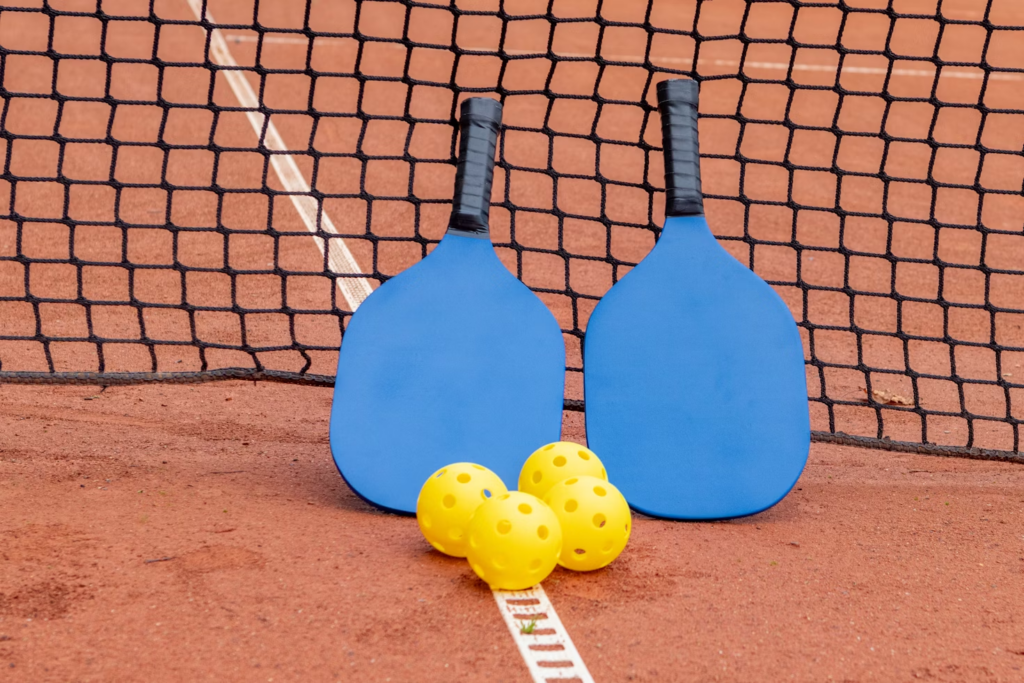Pickleball has rapidly grown into one of the most popular sports, combining elements of tennis, badminton, and table tennis. Whether you’re a beginner or an advanced player, mastering the key techniques and strategies is crucial to improving your game.
This guide covers everything from developing a strong serve to mastering footwork and effective doubles strategies. By refining these skills, players of all levels can elevate their performance and enjoy the game to its fullest.
What Is the Ideal Way to Improve My Pickleball Serve?
Improving your pickleball serve involves mastering various techniques, understanding the mechanics of the serve, and consistent practice.
The serve is a critical game component, as it initiates play and can set the tone for the rally.
There are several types of serves in pickleball, each with its own advantages and techniques.
Types of Pickleball Serves
The underhand serve is the most common in pickleball, with the paddle making contact below the waist. It’s easier to control, making it ideal for beginners.

Alt: pickleball paddle and ball closeup
The topspin serve, on the other hand, adds forward spin, causing the ball to dip quickly after crossing the net and making it harder for opponents to return.
The slice serve applies side spin, making the ball curve in the air and skid low upon bouncing, challenging opponents to predict its path.
Finally, the lob serve is a high, arching shot that forces opponents back to the baseline, allowing the serving team, decked out in their personalized pickleball jerseys, to advance and dominate the net.
Key Detail: The average pickleball player participates 2.5 times per week.
Developing a More Powerful Serve
To develop a more powerful serve, start with the correct stance and grip.
A proper stance with feet shoulder-width apart, and a relaxed grip on the paddle provides a stable base for generating power.
Next, focus on your swing mechanics. A smooth, continuous swing with a strong follow-through helps transfer maximum energy to the ball. Engaging the core and using the legs to drive the serve can also add power.
The contact point is equally important. Striking the ball at the optimal height, just below the waist, and ensuring solid contact will enhance both the power and accuracy of the serve.
Avoiding Common Serve Faults
When serving, it’s important to be mindful of common faults.
Foot faults can occur if both feet are not behind the baseline during the serve. At least one foot must be behind the baseline, not touching the court or the baseline.
Another common issue is an illegal serve motion. The paddle must contact the ball below the waist, and the serve must be made with an upward motion, avoiding any sidearm or overhand motions.
Additionally, ensure that the server lands within the correct service box diagonally opposite the server.
Practicing aim and control will help in consistently placing the serve accurately.
Quick Note: Pickleball is an excellent cardiovascular workout that increases your heart rate. Playing regularly can improve cholesterol levels and blood pressure, reducing the risk of heart disease.
How Can I Enhance My Footwork on the Court?
Enhancing footwork on the pickleball court is crucial for improving overall performance and agility.

Alt: athlete sprinting on turf field
Effective footwork allows players to position themselves optimally for shots, maintain balance, and react quickly to opponents’ moves.
Incorporating specific drills and exercises into your training routine can significantly improve your footwork.
Key Drills to Improve Footwork
One of the best ways to enhance footwork is through side-to-side shuffles. This drill involves shuffling laterally across the court while maintaining a low stance and using quick, controlled movements. It is excellent for improving lateral movement and agility.
Another effective drill is using an agility ladder. Players can perform various footwork patterns, such as in-and-out steps, lateral hops, and crossover steps. These drills are ideal for enhancing coordination and speed.
Additionally, cone drills, where cones are set up in different patterns on the court, help players practice quick directional changes, improving their ability to navigate the court efficiently.
Improving Lateral Movement
For better lateral movement, practicing crossover steps is essential. This technique allows players to move swiftly from side to side while maintaining balance, making it particularly useful for reaching wide shots.
Another crucial movement is the split step, which involves a small hop just before the opponent hits the ball. This prepares players to react quickly in any direction, ensuring readiness and maintaining balance on the court.
Did You Know? The average pickleball player is 53 years old.
What Are Some Effective Strategies for Playing Doubles?
Effective strategies for playing doubles in pickleball revolve around strong communication, smart positioning, and strategic shot selection. These elements are essential for maximizing team coordination and minimizing errors on the court.
Importance of Communication
Clear and consistent communication between partners is critical in doubles play. This includes calling out who will take shots, coordinating movement, and discussing strategies between points.
Good communication helps avoid confusion, ensuring both players are synchronized and working together seamlessly.
Mastering Positioning
Proper positioning allows doubles teams to cover the court effectively. Partners should move in unison, whether in a side-by-side or staggered formation.
A useful positioning technique is stacking, where both players start on the same side and then move to their preferred positions after the serve. This is particularly helpful for teams with a strong forehand player.

Alt: person holding pickleball paddle and ball
Additionally, teams must quickly move through the transition zone—the area between the baseline and non-volley zone (NVZ)—to establish control at the NVZ line, where volleys and dinks become crucial tools for dominating play.
Partners should also focus on covering wide angles, minimizing the chance of opponents scoring down the sidelines.
Tactical Play for Success
Tactical play is essential for winning doubles matches, and it starts with shot selection.
One key tactic is the third shot drop, a soft shot aimed at the opponent’s NVZ, allowing the serving team to advance.
Dinking is another effective tactic, where controlled, soft shots keep the ball low, forcing opponents to hit upward and creating opportunities for mistakes.
Poaching, where one player crosses to intercept a shot on their partner’s side, can also catch opponents off guard, but it requires good timing and coordination to avoid gaps in coverage.
Lastly, the occasional use of lob shots can force opponents to retreat from the NVZ line, opening opportunities for the serving team to gain control.
Key Insight: Pickleball has rapidly become the fastest-growing sport in the US, experiencing a 385% growth rate over the past six years.
Take Your Pickleball Skills to the Next Level
Mastering pickleball requires a balanced focus on skill development, strategic play, and physical conditioning. By improving your serve, enhancing your footwork, and using effective tactics in doubles, you can significantly boost your game.
Remember, consistency and practice are key to becoming a well-rounded player. Implement these strategies and watch your pickleball performance soar.



